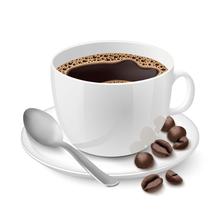Introduction of Coffee Flavor description and Grinding characteristics of Manor in Atlanta, Jamaica
The best Blue Mountain coffee is undoubtedly one of the best coffee available. While price guarantees availability of Blue Mountain coffee, it does not guarantee the coffee's best flavor. It's also worth noting that this coffee tastes more expensive than it looks. To get its best flavor, you have to put in more beans than you drink other coffees, otherwise the flavor is a bit of a misnomer, so the real cost of flavor lies in adding 10 to 15 percent more beans than the coffee that costs next to it.
True Blue Mountain coffee is said to be made from the best green coffee beans in the region, and that's where the fun of tasting home lies. Its rich flavor, balance, rich fruit flavor and sour, can meet people's various needs. In addition, the flavor of high-quality fresh Blue Mountain coffee is particularly long-lasting, as drinkers say-endless aftertaste.
A closer look at the myth of Blue Mountain coffee is necessary because images of the past and reality of today often do not coincide. In 1725 Sir Nicholas Lawes brought the first Blue Mountain coffee seeds from Martinique to Jamaica, where they were planted in St Andrew. Today St. Andrew's is still one of the top three growing regions for Blue Mountain coffee, the other two being Portland and St. Thomas. Thomas) producing area. Within eight years, Jamaica exported more than 375 tons of pure coffee. Coffee production peaked in 1932, harvesting more than 15000 tons of coffee.
But by 1948, coffee quality had declined and Canadian buyers refused to renew the contract, so the Jamaica government set up the Coffee Industry Council to save the fate of premium coffee. By 1969, the situation had improved, as Japanese loans had improved the quality of production and thus secured the market. Even in 1969, Japanese coffee drinkers were willing to pay insurance for the coffee, but today it has reached the point of being a cult favorite.
By 1981, about 1500 hectares of land had been cleared for coffee in Jamaica, followed by investment in another 6000 hectares. In fact, today's Blue Mountain region is a small area of only 6000 hectares, and not all the coffee labeled "Blue Mountain" can be grown there. An additional 12000 hectares are devoted to growing two other types of coffee (non-Blue Mountain coffee): High Mountain Supreme and Jamaica Prime Washed Jamaican.

Important Notice :
前街咖啡 FrontStreet Coffee has moved to new addredd:
FrontStreet Coffee Address: 315,Donghua East Road,GuangZhou
Tel:020 38364473
- Prev

Puerto Rico Manor Coffee Grind Taste Characteristics Variety Price Introduction
Puerto Rico gourmet coffee has been exported to the United States, France and Japan. Coffee in this country is generally carefully cultivated, pure taste, aroma, heavy particles, which are among the best brands in the world. The best coffee is Yauco Selecto, which means select. Grand Lares Yauco is grown in the southwestern part of the island, Lares.
- Next

Description of Coffee Flavor in Silver Mountain Manor, Jamaica; introduction to the characteristics of varieties in producing areas
The real Blue Mountain Coffee is one of the most advantageous coffee growing conditions in the world. The weather, geological structure and topography of Jamaica provide a unique ideal place. The ridge across Jamaica extends to the eastern part of the island, with the Blue Mountains rising to more than 2100 meters. The cool weather, foggy weather and frequent rainfall reconcile the rich land of Rain Water. Here people use mixing.
Related
- Does Rose Summer choose Blue, Green or Red? Detailed explanation of Rose Summer Coffee plots and Classification in Panamanian Jade Manor
- What is the difference between the origin, producing area, processing plant, cooperative and manor of coffee beans?
- How fine does the espresso powder fit? how to grind the espresso?
- Sca coffee roasting degree color card coffee roasting degree 8 roasting color values what do you mean?
- The practice of lattes: how to make lattes at home
- Introduction to Indonesian Fine Coffee beans-- Java Coffee producing area of Indonesian Arabica Coffee
- How much will the flavor of light and medium roasted rose summer be expressed? What baking level is rose summer suitable for?
- Introduction to the characteristics of washing, sun-drying or wet-planing coffee commonly used in Mantenin, Indonesia
- Price characteristics of Arabica Coffee Bean Starbucks introduction to Manning Coffee Bean Taste producing area Variety Manor
- What is the authentic Yega flavor? What are the flavor characteristics of the really excellent Yejasuffi coffee beans?

